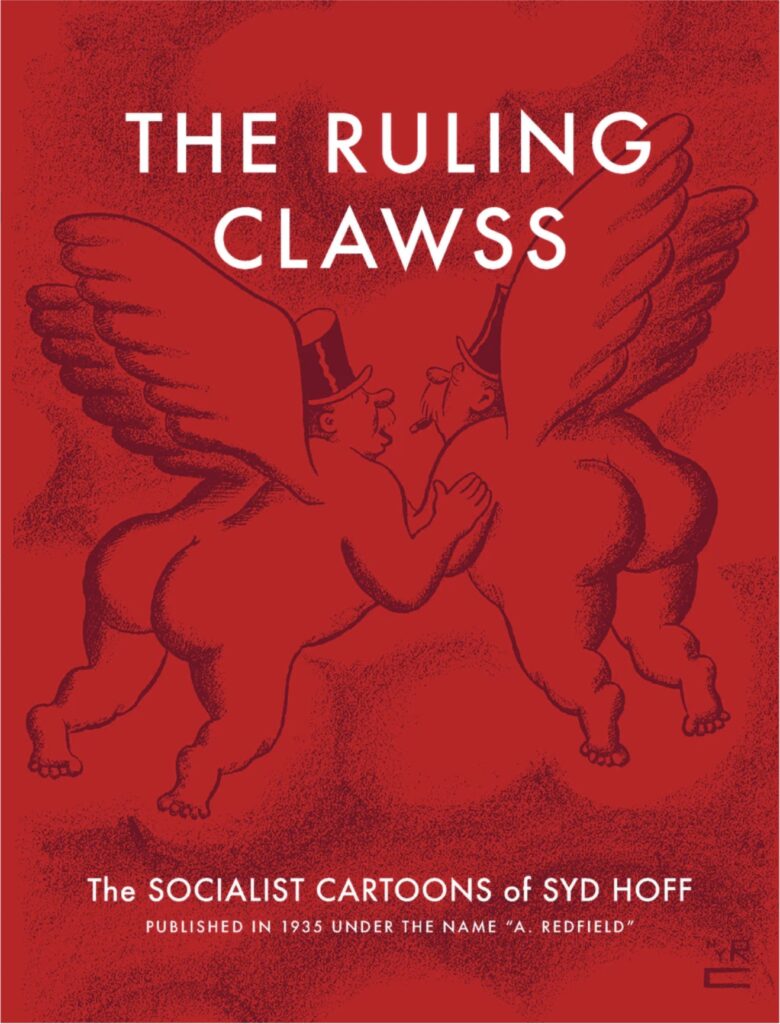Look what just arrived in the mail!
This is Syd Hoff’s first book. But you probably don’t know it. It was published under a pseudonym in 1935. And it’s never been republished — until now. Also, Syd Hoff didn’t want you to know about it. I tell that story and others in my introduction to the book, which has just been published by the New York Review of Books.

Most of my introduction addresses Syd Hoff’s life and work. But, at the end, I talk about how these cartoons speak to our present moment — in particular, how they might inspire contemporary readers to build a better world.
My original draft also addressed the present moment, but it had a more mixed tone. NYRB’s editors suggested I lean more into the activist potential, and that talk about specific cartoons. So, I did. Here’s what got cut — with the exception of elements from the first sentence, this is not in the book.
But the concerns of the 1930s have returned in the 2020s, and Hoff’s take on them speaks as much to his time as to ours. As was true then, wealth and power is concentrated among the 1%, and there’s a rising anger among the 99%, some of whom have grown disillusioned with the democratic system.
What Don DeLillo’s White Noise (1985) calls “the continuing mass appeal of fascist tyranny” was in the ascendant then as now. In 1935, Father Coughlin, the Catholic priest whose popular radio programs reached virtually all of the Eastern and Midwestern US, began promoting fascism, expressing his admiration for Hitler and Mussolini. Today, a major American “news” network and political party supports an authoritarian ex-president who poisons democracy by spreading lies about election fraud, and who expresses his admiration for Vladimir Putin, Kim Jong Un, and Tayyip Erdogan.
As in the 1930s, major police unions also embrace fascist thuggery. Though there were and are police who serve the public interest, they seem more the exception than the rule. In 2016 and 2020, the Fraternal Order of Police — the nation’s largest police union — endorsed for president a racist con-man who frequently suggested that his opponents be jailed, beaten up, or killed. In the 1930s, as Hoff notes in his afterword, the police were “used to break strikes, to smash demonstrations of hungry workers and, in general, to protect the interest of the ruling class.” In 2020 and the years immediately prior, police have systemically wielded violence against groups protesting injustice — the Occupy movement, activists for climate justice, and the movement for Black lives.
Though fear of losing his livelihood later prompted him to distance himself from his A. Redfield work, Hoff remained proud of these early cartoons. His later work might be susceptible to the criticism that he, in 1935, leveled at his fellow “satirists who, at the same time they bite the bourgeoisie, use only their lips, but not their teeth.” However, the very best of these early cartoons compare favorably to the work of our best political cartoonists: Thomas Nast, Art Young, Robert Minor, Herblock, Ann Telnaes.
Cartoonists who use their teeth.
Because, for the 99%, life under late capitalism bites. And, in these cartoons, Syd Hoff bites back.
That’s it! See the full introduction in The Ruling Clawss: The Socialist Cartoons of Syd Hoff, out now from New York Review Comics.
